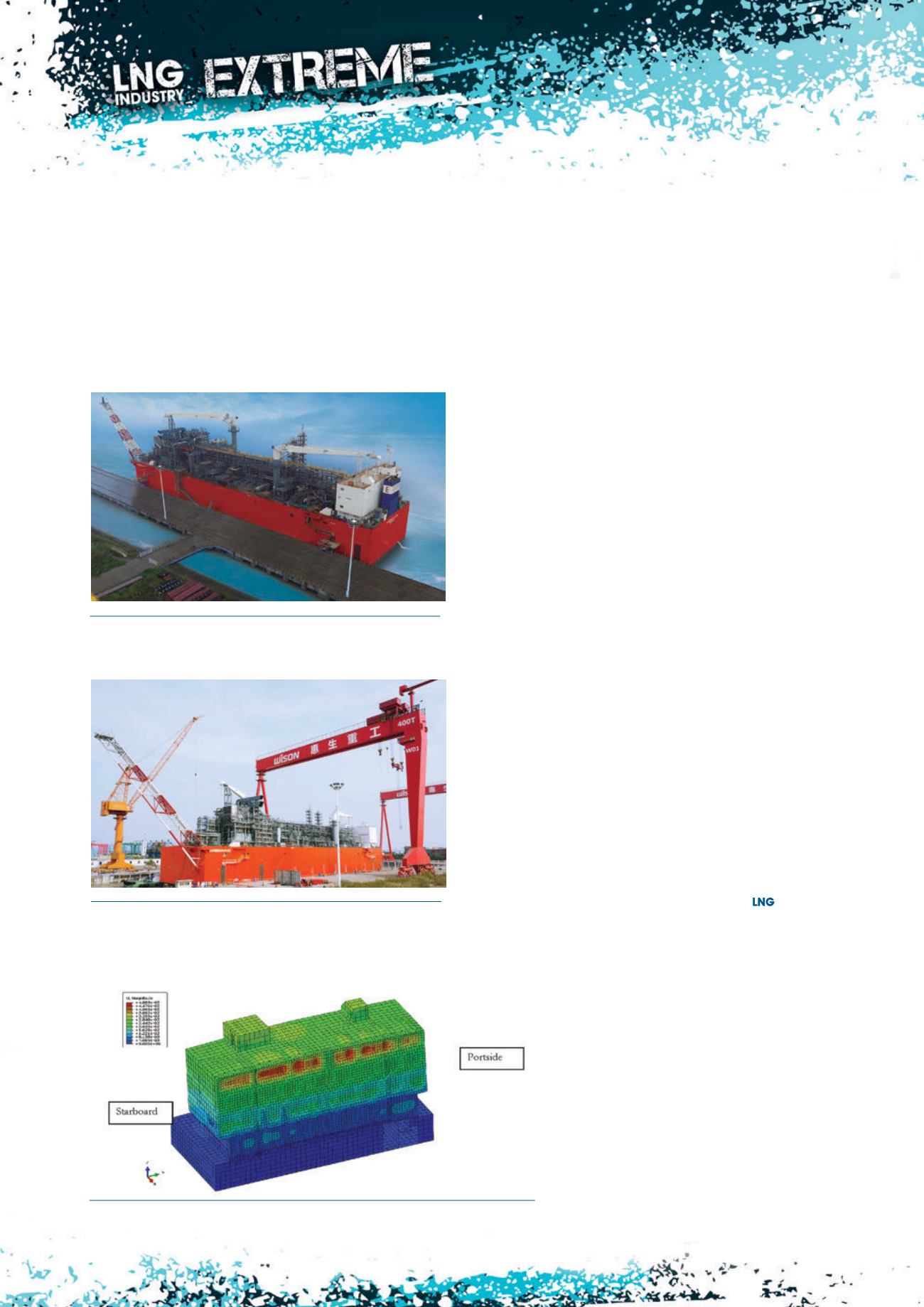
52
information during analysis. Computational fluid dynamics (CFD)
software is applied for analysis. FERA is illustrated in Figure 1.
Fire fighting systems and safety
Passive and active fire fighting systems will be designed based on
SOLAS, API, NFPA, IGC, class requirement, etc. Some of the main
activities that these systems will carry out include the following:
Fire and gas detection.
Alarm, internal, and external communications.
Fire fighting.
ESD, process shutdown (PSD), and other shutdown systems,
including riser ESD valves and pipeline sub-surface isolation
valve (SSIV).
Flare and depressurising system (blow down).
Fire, explosion and gas dispersion protection.
Emergency power systems and uninterrupted power systems
(UPSs).
Arrangements for escape and evacuation.
Life support at temporary refuge and muster facilities.
Seawater fire fighting, deluge/spray systems and dry powder
systems are designed for the topside and cargo areas. SOLAS
requirements will be applied to the accommodation and engine
room, etc.
The path forward
Fire protection is a key issue during the entire life of a project.
Although the FLNG project is at the commissioning stage, fire
protection considerations will be taken into account throughout
the following stages:
Engineering, procurement and construction (EPC).
Transportation and installation.
Commissioning and first gas.
Normal operation.
Maintenance.
The fire safety in the transportation/installation and
commissioning/first gas stages shall be separately
hazard-identified as per design.
Conclusion
This article gives a general description of fire safety practices on
board FLNG vessels. The active and passive fire fighting systems
should be designed based on analysis and rules. Some protection
design criteria are also presented. Additionally, lessons learned
and the path forward are outlined for a deep understanding of fire
safety.
Proper organisation and training are critical for workers’ safety
in the case of a fire, in addition to a proven design.
References
1. Western Australia Legislative Assembly, Economics and
Industry Standing Committee, report 5: FLNG safety
Matters, (May 2015).
2. VANEM, E., ANTAO, P., ØSTVIK, I., and
DEL CASTILLO DE COMAS, F., ‘Analyzing
the risk of LNG carrier operation. Reliability
Engineering and System Safety’, Vol. 93,
Issue 9, DOI: 10.1016/i.ress.2007.07.007.
ElSERVIER. (2008), pp. 1328
–
1344.
3. UCL Fire Technical Note-TN024, User Guide to
the Classification of Fires for Extinguishing
Purposes.
4. OTI 92 596 Oil and Gas Fires
–
Characteristics
and Impact.
5. American Institute of Chemical Engineers
Center for Chemical Process Safety (CCPS),
Guidelines for Chemical Process Quantitative
Risk Analysis, Second Edition, p. 269, (2000).
Figure 2.
The floating LNG (FLNG) vessel on quayside for
outfitting and commissioning.
Figure 3.
The FLNG vessel on drydock.
Figure 4.
Deformation analysis for accommodation structure.


